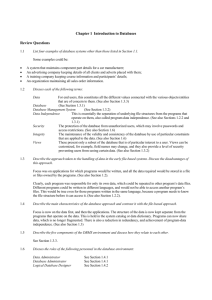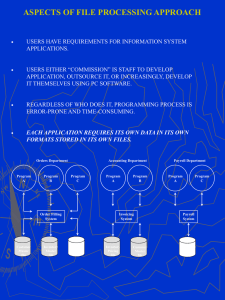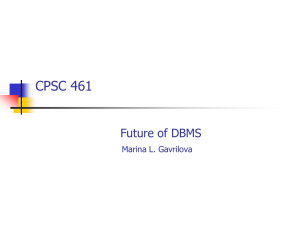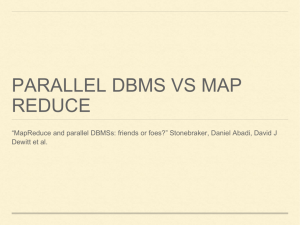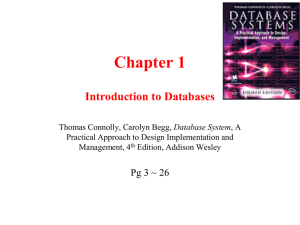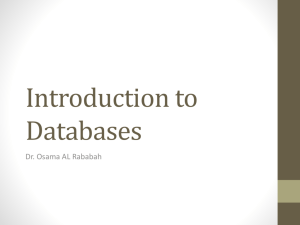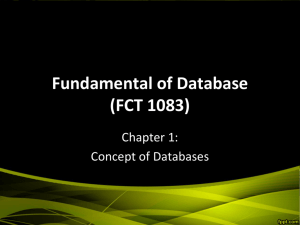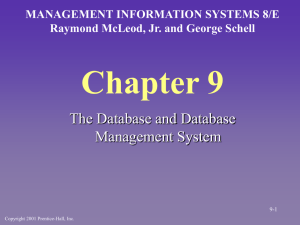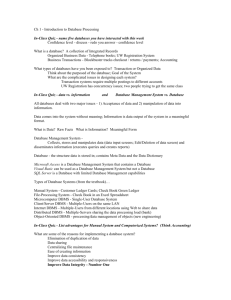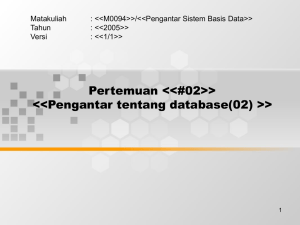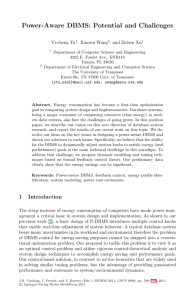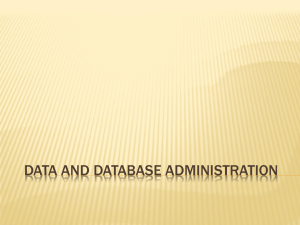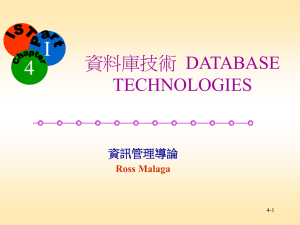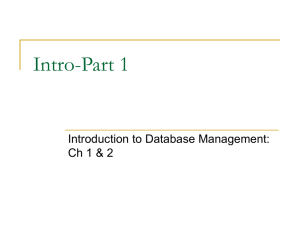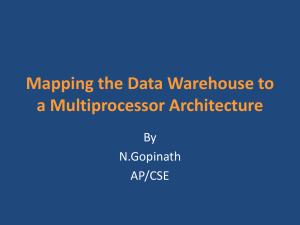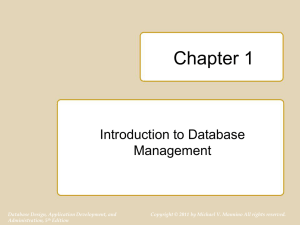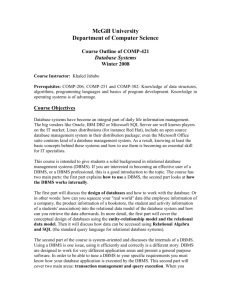Presentation - UTPA Faculty Web
advertisement
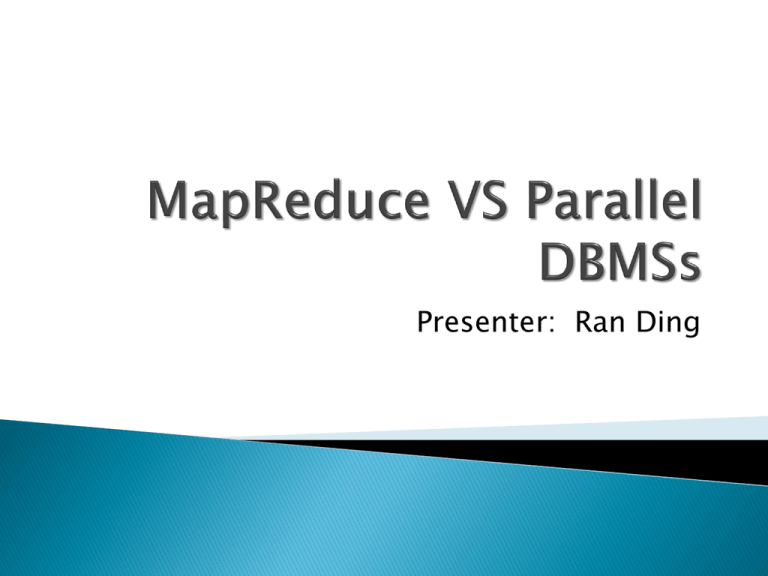
Presenter: Ran Ding 1. 2. 3. 4. 5. Introduction Where the MR wins DBMS “sweet spot” tests Why the Parallel DBMS wins Conclusion The MapReduce (MR) paradigm has been hailed as a revolutionary new platform for large-scale, massively parallel data access. Like Hadoop Parallel DBMS appeared at mid-1980. the Teradata and Gamma projects pioneered a new architectural paradigm based on a cluster of commodity computers. Distributing the rows of a relational table across the nodes of the cluster so they can process in parallel. One benefit is system automatically manages the various alternative partitioning strategies for the tables involved in the query. Like hash, range, and round-robin….. It is not easy!!!!!! UDF(user defined field) helps. Like GROUP BY in SQL. 1. 2. 3. 4. 5. ETL and “read once” data sets Complex analytics Semi-structured data Quick-and-dirty analyses Limited-budget operations Extract-transform-load system MR system can be considered a generalpurpose parallel ETL system. DBMSs may perform the ETL Cannot be structured as single SQL aggregate queries MR is a good candidate MR systems are good at processing the data is prepared for loading into a back-end system DBMS requires wide tables with many attributes Plus, MR-style systems are easily store and process DBMS need the programmer write the schema then load MR just copy! MR is basically open source for free Parallel DBMS: huge cost 1. 2. 3. 4. 5. Repetitive record parsing Compression Pipelining Scheduling Column-oriented storage Parsing task requires each Map and Reduce task repeatedly parse and convert string fields into the appropriate type Records are parsed by DBMSs when the data is initially loaded. It is hard to say…….. Commercial DBMSs may use carefully tuned compression algorithms In parallel DBMS, data is streamed from producer to consumer the intermediate data is never written to disk In MR system, it writes the result to local data structure, and consumers read from it In a parallel DBMS, every node knows what it should do MR system is scheduled on processing nodes one storage block at a time. Vertica Reads only the attributes necessary for solving the user query DBMS-X and Hadoop are both row stores MR advocates should learn from parallel DBMS the technologies and techniques for efficient query parallel execution. MR systems are powerful tools for ETL-style applications and for complex analytics. If the application is query-intensive, whether semi structured or rigidly structured, then a DBMS is probably the better choice



